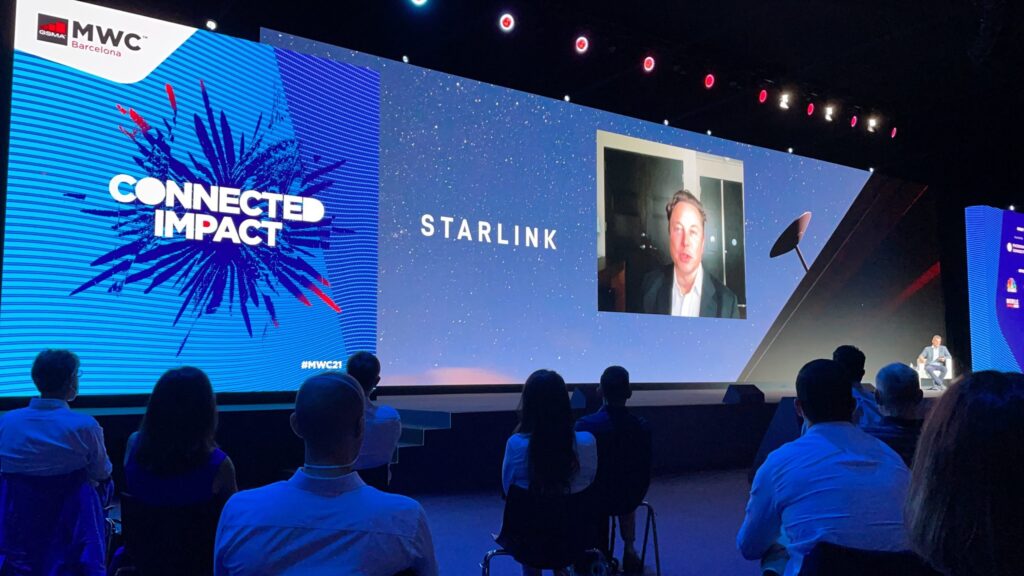

MWC Barcelona (formerly Mobile World Congress) has expanded beyond a mobile phone trade show, becoming the de facto global meeting place for the connectivity industry. This year’s edition, which took place from 28 June to 1 July, was one of the first large, in-person events in the tech industry since the pandemic began.
This year’s theme “Connected Impact” focused on how to build back better from the pandemic. In his opening keynote address, GSMA Secretary General, Mats Granryd, emphasised the critical role of the mobile industry during the pandemic and pointed to the industry’s priorities as we slowly emerge from the crisis – climate action, increasing trust in digital technologies and bridging the digital divide.
The pandemic has proven that digitisation is key to economic and social resilience, which is why connectivity must be at the very top of every national agenda. As Doreen Bogdan-Martin, Director of the ITU’s development bureau (ITU-D), flagged: with more than 3.8 billion people still not connected to the internet, “the cost of digital exclusion is already higher than the cost of closing the digital divide.” The success of closing the digital divide is dependent on multi-stakeholder engagement and leadership from governments, businesses, civil society, technology providers, and finance experts. In order to deliver connectivity investment to target communities, the ITU advocates for a strong financing backbone, innovative connectivity technologies such as low earth orbit (LEO) satellites, mesh technologies and last mile connectivity solutions, as well as the involvement of all stakeholders in monitoring progress.
Partnerships are also crucial for realising Industry 4.0. Manufacturing is undergoing a major generational shift, with Industry 4.0 set to create far more flexible, efficient and sustainable production lines, enabled by 5G and the Internet of Things (IoT). Access Partnership’s Policy Manager, Maria Zervaki, chaired the Connected Industry stage at MWC, setting out the tone for the track; IoT has progressed immensely over the past decade, and is becoming an embedded partner in verticals and sectors around the globe. IoT is here to stay, but the current IoT ecosystem is fragmented and the responsibility is on the customer to manage it. As a result, the next step is to a ensure a partner ecosystem which can orchestrate all parts of the network.
Democratising connectivity as a path to Covid recovery
In the quest to connect the unconnected, three new technologies to democratise connectivity took central stage at this year’s congress. First, Open Radio Access Network (Open RAN) allows for the upgrading of existing telecom infrastructure through a software solution. By “opening” the networks, operators can bypass vendor lock-in, which in turn reduces prices and improves choice, flexibility and quality of service for both consumers and enterprises. While a handful of vendors have traditionally dominated mobile network infrastructure, multiple stakeholders across government and industry are now pushing for openness, as the increased coverage provided by these networks can help to bridge the digital divide and connect more people in remote areas.
Another such technology is public cloud, which is defined as cloud computing services offered by third-party providers over the public Internet, allowing customers to use these services on demand. Public cloud evangelist and CEO of Totogi, Danielle Royston, urged operators to embrace public cloud infrastructure, claiming that along with Open RAN, the technology will allow operators and consumers to benefit from better prices and increased competition.
Finally, the most awaited intervention came from popular entrepreneur Elon Musk as he revealed his plans for the Starlink broadband satellite service. Starlink is a constellation of low earth orbit (LEO) satellites that can provide internet connectivity everywhere on Earth (except the North and South pole). He said in jest that his main goal for Starlink is not to go bankrupt, in reference to the destiny of other satellite broadband providers in the recent past. In order for the project to succeed, partnerships with mobile operators and other major stakeholders will be key, as satellites can complement mobile operators with backhaul and help to meet rural connectivity requirements contained in 5G licences.
As the event drew to an end, it became clear that the time is ripe for more openness and experimentation in the connectivity space. Covid has accelerated a wave of innovation which was already under way, as solutions need to be deployed fast and responsibly in order to reach those that need it most. As per the closing remarks of Musk, “our mission is to expand human consciousness beyond Earth, but also to make life better on Earth.”
